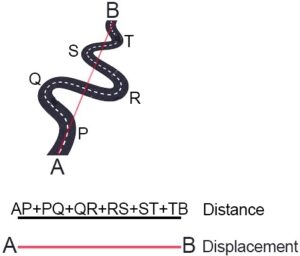This page is a collection of articles that give differences between many objects, words, terms, etc. in general science. They are not listed in any particular order. The differences are mentioned in simple manner without going into depth of their meanings or scientific concepts.
* What are the differences between DC and AC?
- DC means Direct Current.
- Current flows only in one direction.
- Current flows from the positive terminal to the negative terminal.
- It has only resistive load
- Its frequency is zero.
- It can be produced by battery cells, DC generators, solar photovoltaic cells.
- Natural objects like electric eels, animal brains produce direct current.
- It is difficult to increase or decrease DC voltage.
- AC means Alternating Current.
- Current flows in both directions.
- Current flows from positive to negative and vice versa.
- It has resistive, inductive and capacitive loads.
- Its frequency can be different values, such as 25, 50, 60 Hertz.
- It can be produced only by AC generators.
- AC is not produced naturally.
- It is easy to increase or decrease AC voltage using transformers.
* What are the differences between Distance and Displacement?
- Distance is a scalar quantity. It means that it has only numerical quantity (magnitude), as in 10 cm, 15 feet, 20 metres, 100 km, etc.
- It is the total length of a path.
- Distance can only be positive.
- Distance can only increase, but never decrease as the path is traversed.
- It is the sum of individual paths.
- It can be for straight, bent, or curved paths.
- Displacement is a vector quantity. It means that it has a direction component along with magnitude. It is measured in the same units as distance.
- It is the straight-line length between point of origin and final position.
- Displacement can be positive, negative or zero depending on the direction.
- Displacement can decrease.
- It can be equal to or less than distance, but never more than it.
- It is always a straight-line path from staring point to ending point.

* What are the differences between Mass and Weight?
- Mass is a scalar quantity. It has only numerical value (magnitude).
- It is the amount of matter in an object.
- It is always constant irrespective of its location.
- Mass can never be zero.
- It is designated as ‘m’.
- It is measured in kilograms (kg).
- Weight is a vector quantity. It has magnitude and is dependent on direction.
- It is the quantity of force exerted on a body by gravitational force.
- It varies depending on the force of gravitation exerted by a body.
- Weight can be zero in places where gravitational force does not exist.
- It is designated as ‘W’.
- Since it is a force, its unit is newton (N).
Relation between mass and weight:
W = m x g
W is weight in newtons
m is mass in kg
g is acceleration due to gravity, in m/s2
W = m x g
W is weight in newtons
m is mass in kg
g is acceleration due to gravity, in m/s2
* What are the differences between Weather and Climate?
- Weather is the short term condition of the atmosphere at a place and time.
- Weather can change from hour to hour or day to day.
- Weather is the instantaneous atmospheric condition.
- Climate is the long term condition of the atmosphere of a place.
- Climate changes are slower compared to weather.
- Climate is the average of the weather at that place over a period of time.
The climate of Sahara desert is hot and dry. But on a particular day, the weather may be windy and rainy.
* What are the differences between Atom and Molecule?
- Atoms are the smallest particles of elements.
- They may or may not exist freely.
- They are spherical in shape.
- They are made of a nucleus and electrons.
- Molecules are the smallest particles of compounds.
- They can exist freely.
- They have different shapes based on the atoms connected.
- They are made of same type or different types of elements.
A molecule of water, H2O is made of two atoms of Hydrogen (H) and one atom of Oxygen (O).
* What are the differences between Element and Compound?
- Elements are made up of only one type of atoms.
- They cannot be broken down into other materials.
- They are classified as metals, nonmetals and metalloids.
- They are represented by letters and numbers to indicate the number of atoms in a stable element.
- Compounds are made up of molecules made of different types of atoms.
- They can be broken down into their constituent elements.
- They are classified as metallic, ionic and molecular.
- They are represented by chemical formula that show the elements that make them.
Water (H2O) is a compound made up of two elements, Hydrogen (H2) and one atom of Oxygen (O).


You should be a part of a contest for one of the greatest blogs online. I am going to recommend this site!
Simple explanations about differences, never thought of that. Cheers buddy
Nice collection of differences between normal words. Please write more in this article.
Differences in many things are not explained well in many sites. Came across yours. Add more to this topic.